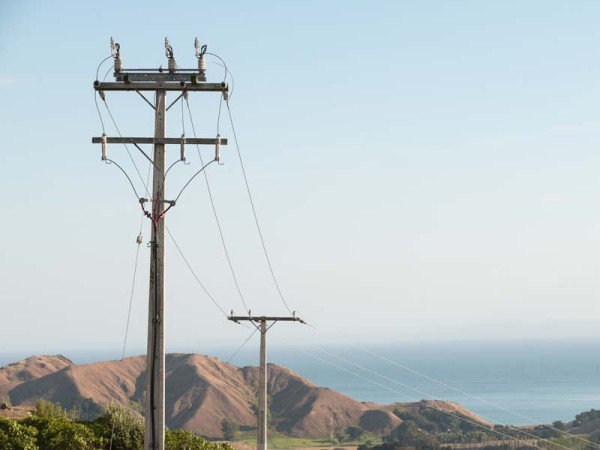New Firstlight Network pricing from 1 April 2024
These are our new line charges effective from 1 April 2024. The charges are made by Firstlight Network to electricity retailers for the use of our network in supplying electricity to consumers.
Click the link below to see full details:
SCHEDULE OF CHARGES

FAQs
Q. What were the considerations when setting the new pricing for the year?
A. Considerations when setting this pricing include the Consumer Price Index, the Commerce Commission’s DPP3 Price Path, power usage across the region, cost of service, and a move to increasing the fixed proportion of revenue from line charges.
Q. What are the key pricing changes for domestic customers?
A. For low domestic users (under 8,000 kWh a year), the fixed charge portion of Firstlight Network’s line charges is increasing 33%, from 45c to 60c per day, reflecting government regulations. The average overall increase for the Firstlight Network part of their power bill will be 11.4%, or $6.70 per month.
Standard users (over 8,000 kWh) will see, on average, an increase of 9.5%, or $8.32 per month.
Charges for off-peak power consumption will fall slightly, by 1%.
Q. What are the key pricing changes for commercial customers?
A. Fixed charges for all commercial and industrial customers will increase by an average of 13%, while variable charges increase by an average of 9%. Most of the changes are driven by the cost allocation methodology.
Q. How is a power bill structured?
A. Line charges are strictly regulated. On average, Firstlight Network’s line charges make up around 40 percent of the total cost on an electricity bill. They are a combination of transmission and distribution charges. Firstlight Network’s line charges go directly to energy retailers, who incorporate them into each customer’s power bill. The remaining costs are determined by the retailers.
Q. Why is the government phasing out low fixed electricity pricing plans in New Zealand?
A. The change was a key recommendation of a 2019 independent panel review of electricity prices. The review found low fixed charge regulations were poorly targeted and resulted in a number on unintended consequences, such as shifting costs to households with low incomes and high electricity use. In response, from 1 April 2022 the government started the gradual phasing out of low fixed electricity pricing plans. The change means that the electricity sector can implement fairer pricing plans for distributing electricity, which will ultimately help networks manage the load more efficiently during peak times.
Q. What is the Time of Use/off-peak tariff option?
A. With Firstlight Network’s Time of Use tariff, residential consumers have the ability to reduce their electricity bill by shifting some of their power use from peak to off-peak times. Off-peak times are Monday to Friday 9pm to 7am, 11am to 5pm, and weekends. For example, turn on your washing machine and dishwasher during those off-peak times, and you’ll be paying a lower price for your power.
To take advantage of the Time of Use tariff, you need to have a communicating smart meter, and choose a suitable plan from your retailer.
Q. How can I be sure I’m getting the best electricity deal for my needs?
A. You can choose from more than 20 electricity retailers in Tairāwhiti. See the full list here. Research shows that people who switch regularly can save more. Switching retailers is straightforward. To find out the best plan for you, visit Powerswitch, a free and independent website:
POWERSWITCH